
Wildemania amplissima
Red Cellophane, Northern Pink Laver
Interactions/observations conducted: 27 May 2021
Fishboat Bay, Juan de Fuca Strait, B.C., Canada.
Tide: -0.7 ft tide at 10:18am PDT (measured at Sheringham Point Tidal Station)
Conditions: Calm winds, overcast, some precipitation, 11˚C.
Phase of Moon: Waning Gibbous (approx. 30 hours into this phase at time of collection); (Previous Phase, Full Moon, 26 May 2021 at 4:13am PDT: Next Phase, Third Quarter, 2 June 2021 at 12:24am PDT.)
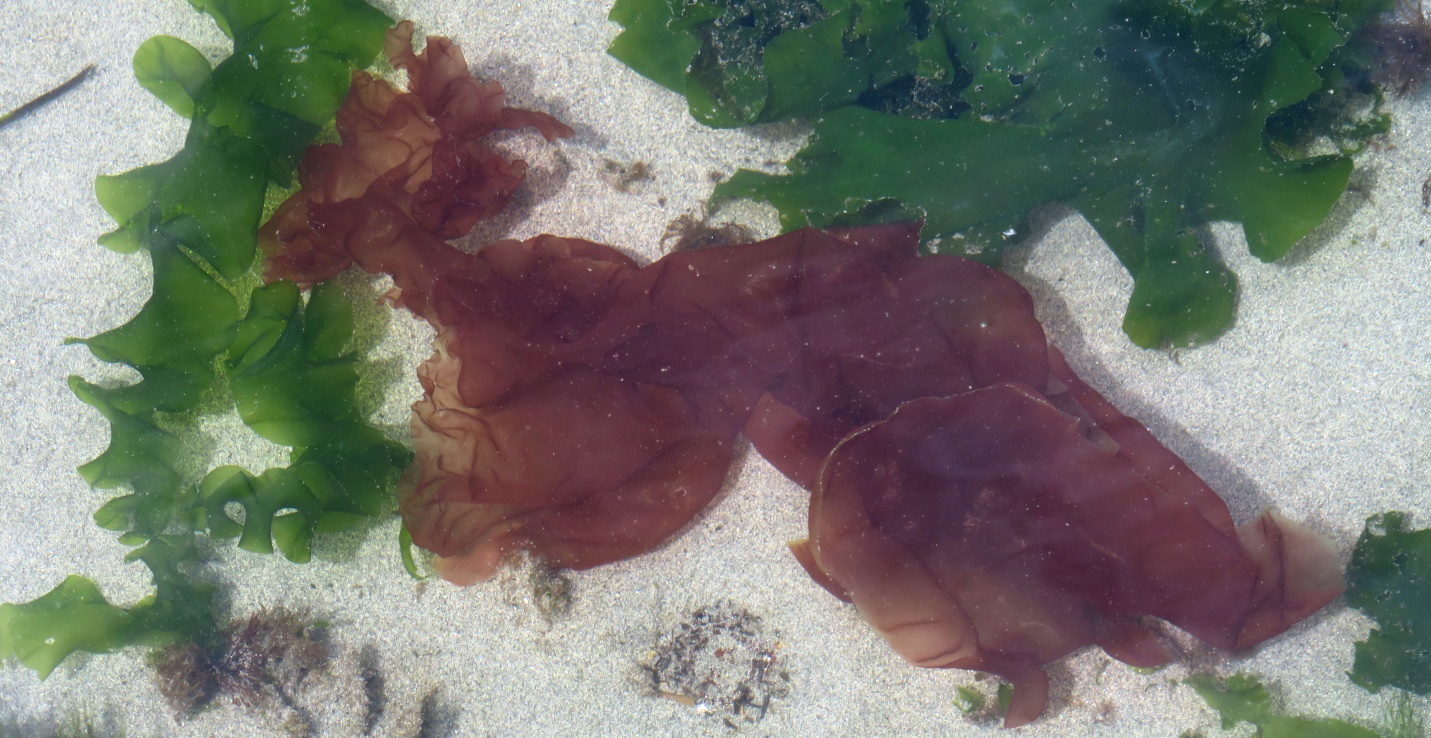
Figure 1: The generously obovate form of this Wildemania amplissima is well exemplified here, also the size tapering near the tip. Ruffled edges distinguish this from other species in the genus and lend a constantly changing ‘impression’ of the shape of this translucent red alga. Fishboat Bay, Juan de Fuca Strait, B.C., Canada. June 14, 2021. Photo ID 27412 ©Seaweedwhisperings.com
Person 1:
Looks delicate but has great elasticity.
Translucent, very thin.
Looks helpless in the waves – no control of movement.
Pinky-brown coloration.
Doesn’t stand out. The glimpses of the edges will catch your eye, but as soon as the seaweed moves, this disappears from view.
It might catch your eye, but doesn’t hold your attention.
Taste and feel – crunchy delicate pleasant flavor. Sand in this piece!
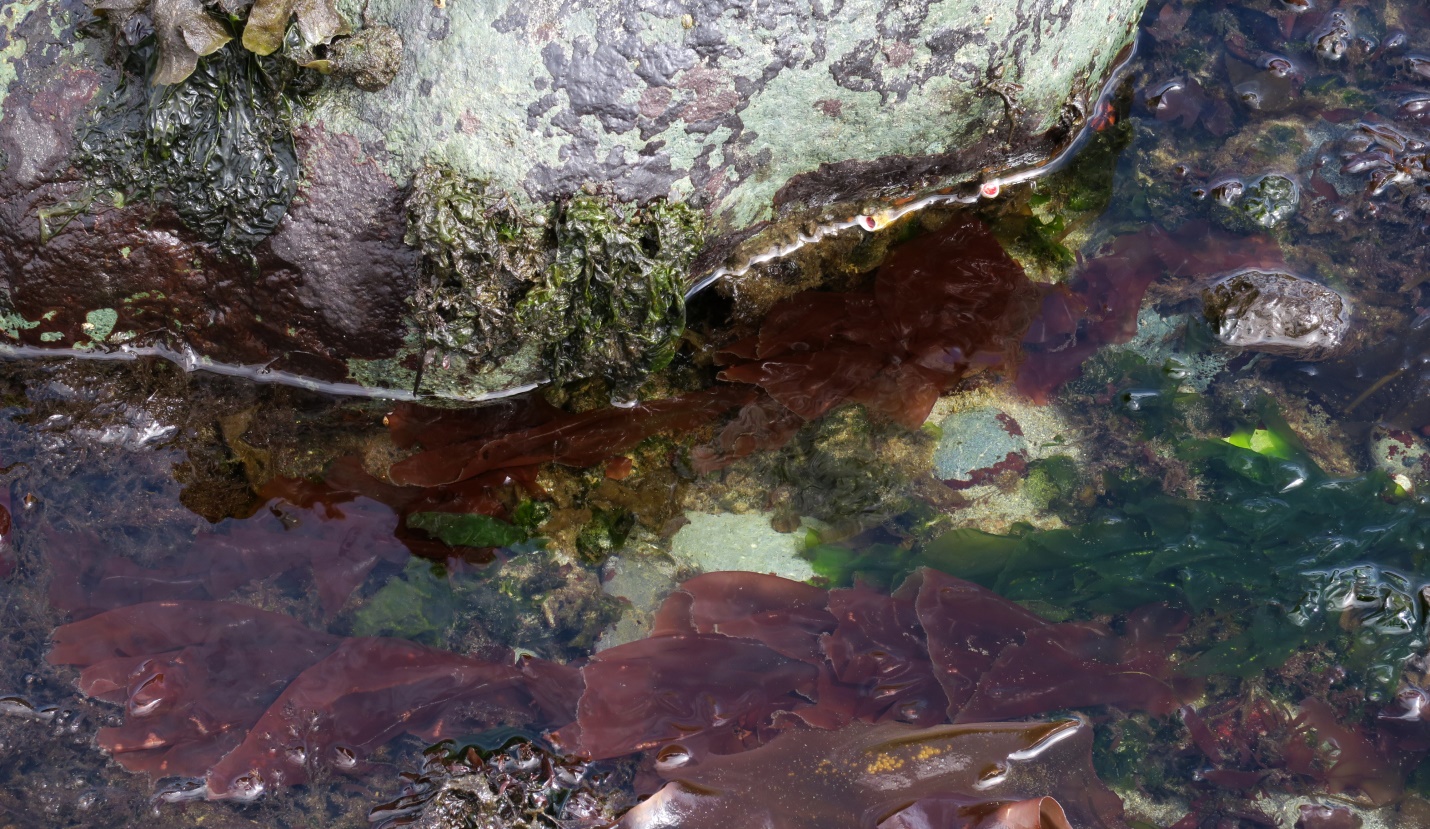
Figure 2: In a shallow channel running alongside a large boulder two large ‘sheets’ of Red Cellophane are wafting their ruffles in the outgoing current. Willow Point, Strait of Georgia, B.C., Canada. April 30, 2021. Photo ID 27413 ©Seaweedwhisperings.com
Person 2:
Sheets of pinkish brown.
Wafting over sand, anchored to rock.
Water MOVES you, and you love that feeling!
So thin, yet stretchy.
See through you when you’re next to something – transparent, but you are a red film that allows no clear visual information at all if held further away from my eye to view something.
Wildemania, you unfurl and sway – like a silk scarf.
You have edges that trail in a long line that spirals loosely and somewhat irregularly. That edge, if you can follow it as it moves in the water, has a reach to it that is greater than the main ‘sheet’ of alga.
These edges are trimmed with a sprinkling of little white dots. Sometimes this is quite prominent, other times, not really so apparent.
With you, Red Cellophane, it’s clear that the edge is where the action is at!
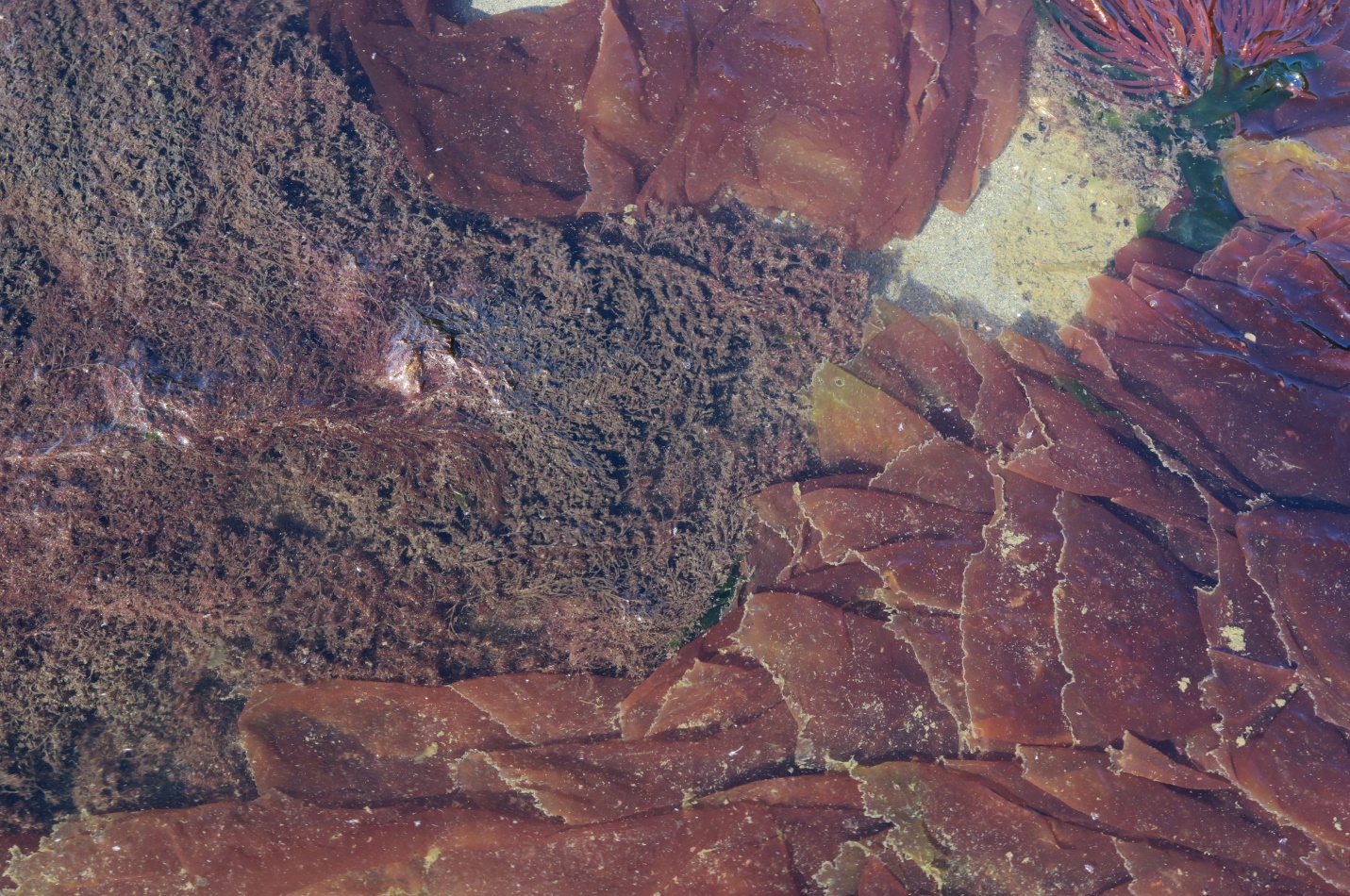
Figure 3: At the very end of their season, when reproductive cells are abundant, the ‘filmy’ margins of the blades of Red Cellophane are evident here. Fishboat Bay, Juan de Fuca Strait, B.C., Canada. July 24, 2021. Photo ID 27414 ©Seaweedwhisperings.com
Discussion:
Swaying and gently spiraling with a sprinkling of color contrast along the edges..., this seaweed has a smoothly sensual or even tantalizingly and subtly embellished quality to its energy. Red cellophane loves to move in the running currents and it does so in a provocative and even teasing manner…, a few sparkles to catch the eye, but nothing too substantial is revealed.
The tease? It looks delicate, but because of its remarkable elasticity it is actually much stronger than you think.
It may reach out your way, but then has no ability to ‘remain’ there and is soon pulled away by the ocean swells; it leaves just as smoothly as it arrives.
This is annual red algae that thrives in spring time and may persist into early summer; so there is a “now you see me, now you don’t” quality to it…, and alternation of its presence.
Wildemania needs rock or an some other adequately anchored base to grow from, but also prefers a sandy beach – perhaps this seaweed is not tough enough for rougher habitats?
Maybe the conditions it needs are only present in a temporary way, too.
So, Red Cellophane, you are ephemeral in numerous ways.
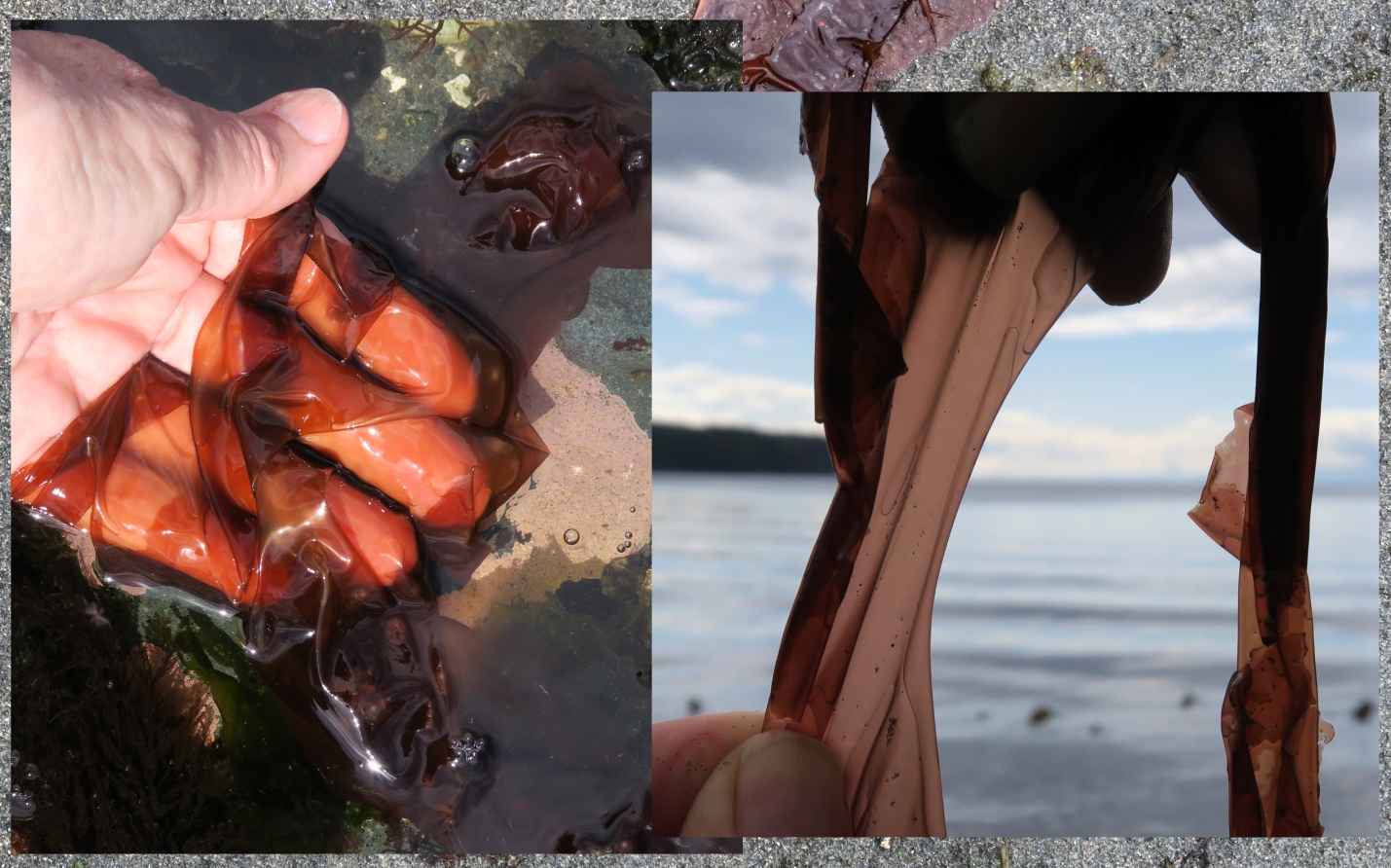
Figure 4 (left): Wildemania amplissima is very thin and the translucency can border on transparency. Willow Point, Strait of Georgia, B.C., Canada. April 30, 2021. Figure 5 (right): Considerable elasticity is one of the surprising features of Red Cellophane. Fishboat Bay, Juan de Fuca Strait, B.C., Canada. May 27, 2021. Photo ID 27415 ©Seaweedwhisperings.com
Biology & Natural History Information:
Description:
Thallus is foliose, opaque, light pink to dusky rose red, and only one to two cells thick. It arises from a minute holdfast and a minute stipe. Blade is variable in shape; the impression is usually somewhat oval, obovate (broader at the base) or elongate with ruffles extending from its center. This seaweed typically reaches lengths of 100 cm and 23 cm wide. The texture of the ‘sheet’ of alga is soft and filmy and it has a matt surface. Reproductive cells scattered along the ruffled blade edges can lend a filmy appearance to the margins. Wildemania amplissima can grow as isolated sheets or in clusters.
Habitat:
This species can be found in spring or early summer often on clamshells inhabiting sandy beaches. It also grows on rocks or occasionally as an epiphyte on other red algae in the lower intertidal and upper subtidal to depths of 15 meters.
North Pacific Distribution:
Aleutian Islands, Alaska, to Monterey Peninsula, California; Russia; north Atlantic.
Remarks:
Individual Red Cellophane algae are largest when growing as epiphytes or in sheltered habitats; they have been recorded measuring up to 6 meters long! The species name, amplissima, is from the Latin meaning large, abundant, splendid and esteemed.
Former name(s): Wildemania cuneiformis, Porphyra cuneiformis.
Classification:
Phylum: Rhodophyta
Class: Bangiophyceae
Order: Bangiales
Family: Bangiaceae
Genus: Wildemania
Species: Wildemania amplissima (Kjellman) Foslie 1891
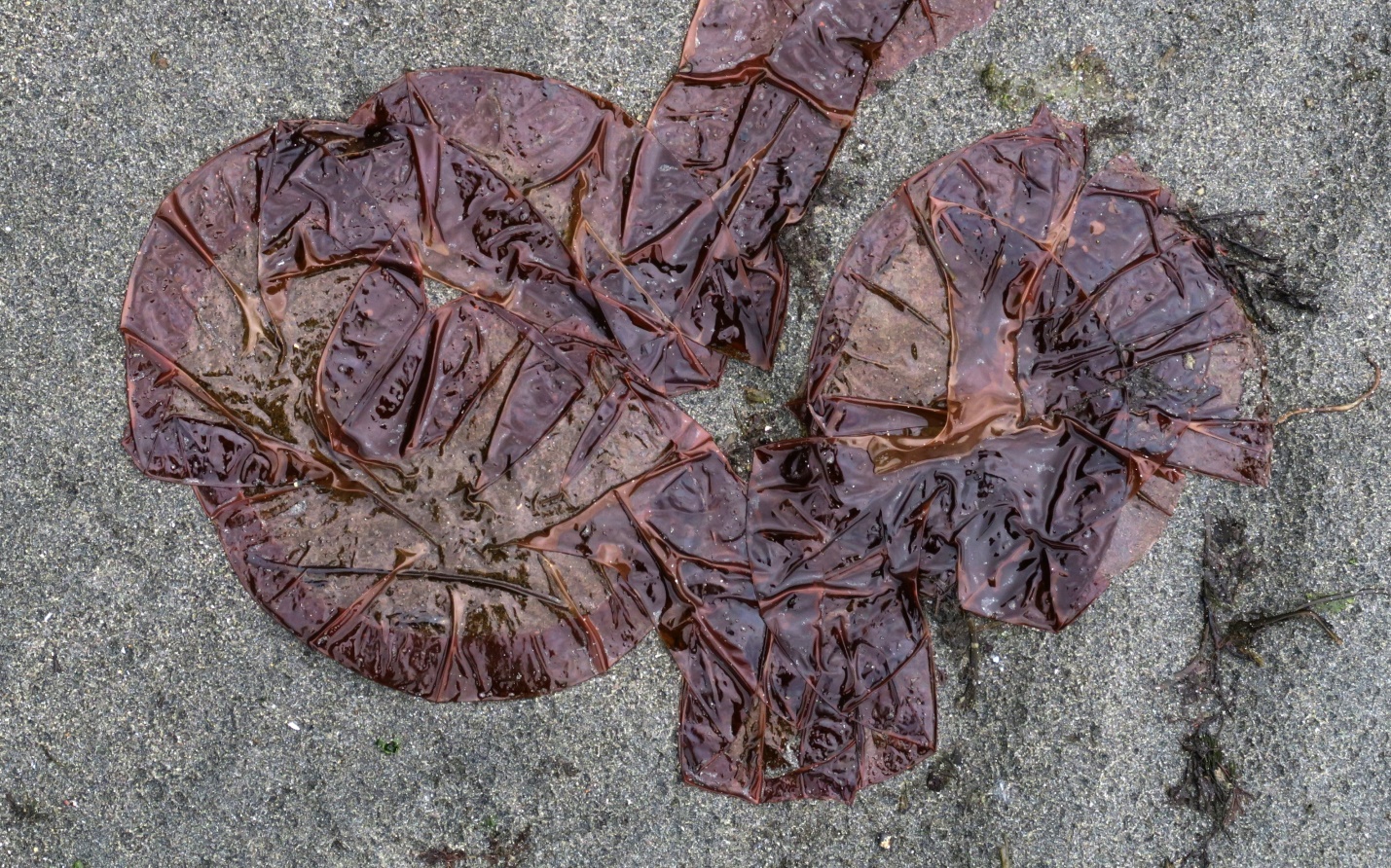
Figure 6: Collapsed on the sand, Red Cellophane gives yet another impression, one that could be likened to shiny and variably toned red stained glass. Fishboat Bay, Juan de Fuca Strait, B.C., Canada. May 27, 2021. Photo ID 27416 ©Seaweedwhisperings.com
![]()